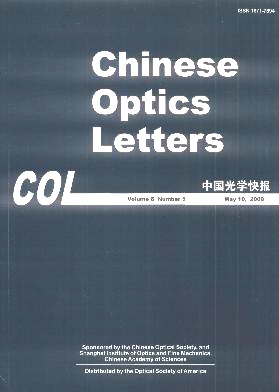Chinese Optics Letters, 2008, 6 (5): 369, Published Online: May. 20, 2008
A study on the best irradiation dose of X-ray for Hep-2 cells by Fourier transform infrared spectroscopy  Download: 571次
Download: 571次
傅立叶变换红外光谱 X射线 放射剂量 人上皮样喉癌细胞株 300.6300 Spectroscopy, Fourier transforms 040.3060 Infrared 340.7480 X-rays, soft x-rays, extreme ultraviolet (EUV) 170.1530 Cell analysis
Abstract
Fourier transform infrared spectroscopy (FTIR) was employed to study the human epidermis larynx carcinoma cell lines (Hep-2) which were irradiated by different doses of X-ray. The results show that (1) the irradiation of X-ray damages the structure of the CH3 groups of the thymine in DNA, which restrains the reproduction of Hep-2 cells effectively, (2) the 8 Gy dose of X-ray irradiation changes the framework and the relative contents of some proteins, lipids and the nucleic acid molecules intercellular in the greatest degree, and (3) the 8 Gy dose of X-ray irradiation is the best irradiation dose for lowering the degree of the cancerization of Hep-2 cells according to the criteria for the degree of the cancerization reported recently. Meanwhile, the apoptosis of these cells were detected by using flow cytometry (FCM) primarily. It shows that the apoptotic ratio of the Hep-2 cells depends on the irradiation dose to some extent, but is not linearly. And the apoptotic ratio of the 12 Gy dose group is the maximum (20.36%), but the apoptotic ratios of the 2 to 8 Gy dose groups change little.
Renming Liu, Weiyue Tang, Guangshui Zhang, Fengqiu Zhang, Xinhui Yan. A study on the best irradiation dose of X-ray for Hep-2 cells by Fourier transform infrared spectroscopy[J]. Chinese Optics Letters, 2008, 6(5): 369.





